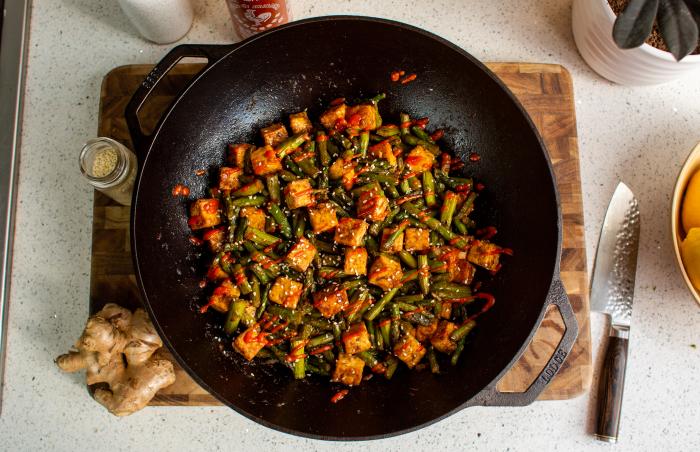A clean wok is a happy wok. Understanding how to remove sticky residue from wok can transform your cooking experience, ensuring that every stir-fry and fried rice dish is not only delightful to eat but also healthier. Sticky residue is a common challenge and mastering its removal is a skill every kitchen professional and enthusiast needs.
Ensuring a clean wok after cooking is essential to maintain the delicate flavors of Asian cuisine and the longevity of your cookware. This article will guide you through simple yet effective methods to care for and maintain your wok, keeping it in pristine condition.

Understanding Sticky Residue on Woks
Why Does a Wok Get Sticky?
When using a wok, oils and sauces can burn and form a sticky layer over time. This often happens when the wok is overheated or when low-quality oils are used. Proper heat management and using high-smoke-point oils can prevent buildup.
The Impact of Sticky Residue
The residue can affect the taste of your dishes, pose health risks by potentially harboring bacteria, and shorten the life of your cookware. It’s crucial to address this issue promptly.
Tools Needed for Cleaning
Having the right tools can make the process smoother and your wok cleaner. Here are must-have items:
- Steel Wool: Ideal for scrubbing off stuck-on food.
- Sponge: A softer option for gentle cleaning.
- Vinegar and Baking Soda: Natural cleaners that are safe for most cooking surfaces.
Step-by-Step Guide to Removing Sticky Residue
Preparation Steps
Before cleaning, ensure that the wok is cooled down to prevent burning yourself and to maximize the effectiveness of cleaning solutions.
Using Vinegar and Baking Soda
1. Boil water in the wok: Fill the wok halfway with water and bring to a boil.
2. Add vinegar: Once boiling, add a cup of white vinegar, let it simmer for about 5 minutes.
3. Baking soda paste: Mix a tablespoon of baking soda with water to make a paste. Apply this paste to stubborn areas.
4. Scrub: Use steel wool to scrub away the residue.
Maintenance Tips for a Pristine Wok
Seasoning your Wok
Properly seasoning your wok after cleaning can prevent future sticking. Heat the wok and rub it with high-smoke-point oil such as peanut or canola.
Regular Maintenance Habits
Regular light cleanings can prevent buildup. Consider wiping down your wok with a paper towel after each use to remove trace amounts of food and oil.
Preventing Sticky Residue in the Future
One effective way to prevent sticky residue is to control the temperature. Always heat the wok before adding oil, and ensure it’s dry before storage to prevent rust, which can exacerbate the problem.
Another tip is to avoid non-stick sprays as they can leave residues over time. If you’re interested in enhancing your wok cooking, check out this guide.
Expert Tips from Professionals
Professionals suggest regularly checking your oil’s smoke point and using woks of high-quality materials to minimize residue. For more detailed tips, visit here to see how seasoned chefs manage their woks.
Common Mistakes to Avoid
Avoid soaking the wok in water for too long, which can lead to rust. Also, do not use harsh chemicals that can deteriorate the woks surface.

FAQ Section
What is the best oil to use in a wok?
High-smoke-point oils like peanut or canola oil are ideal to prevent stickiness.
Can sticky residue affect the flavor of food?
Yes, residue can impart a burnt taste that compromises the intended flavors of your dish.
How often should a wok be cleaned?
After each use to prevent build-up. Periodically deep cleaning is also suggested for long-term care.
As an Amazon Associate, I earn from qualifying purchases.

